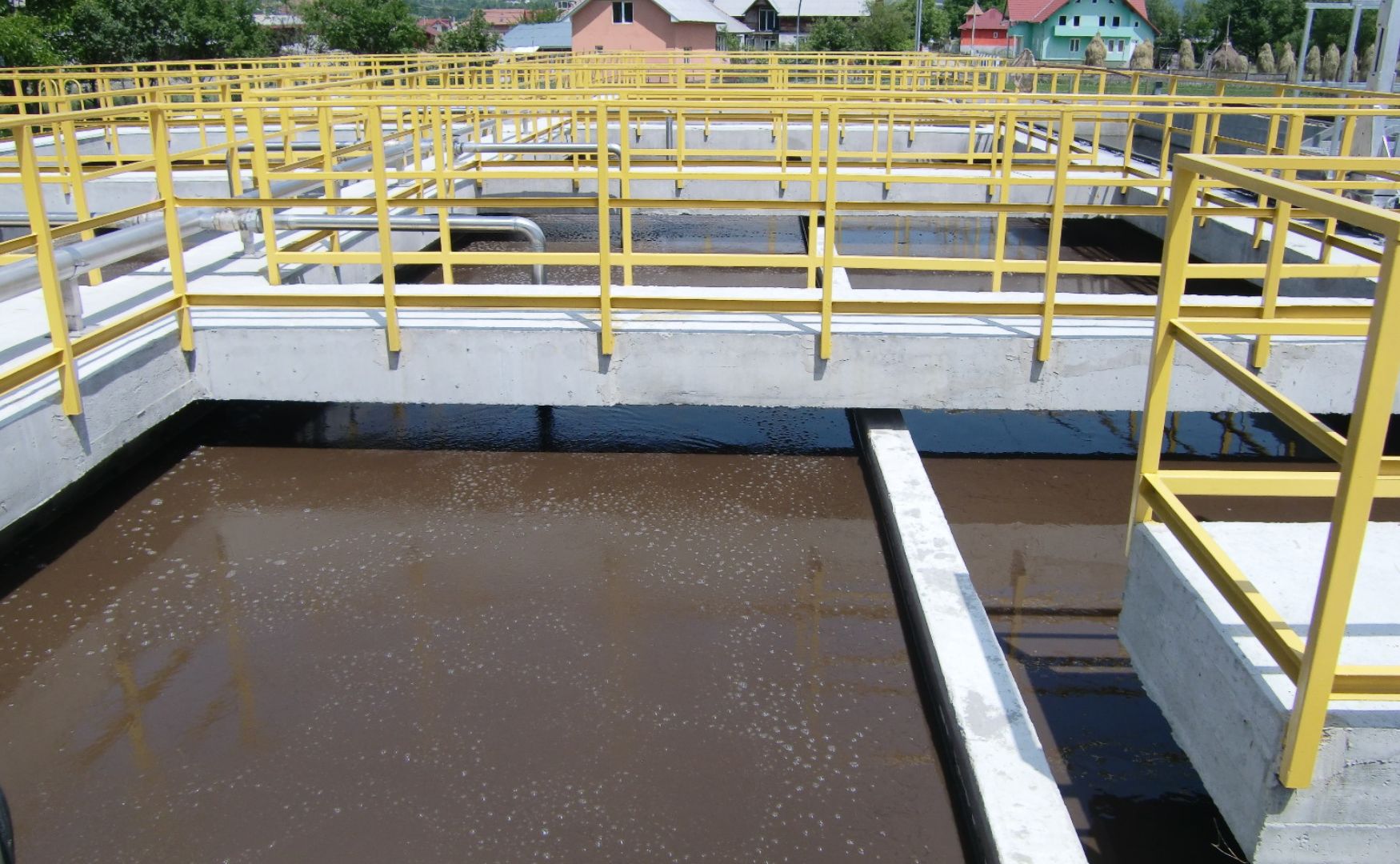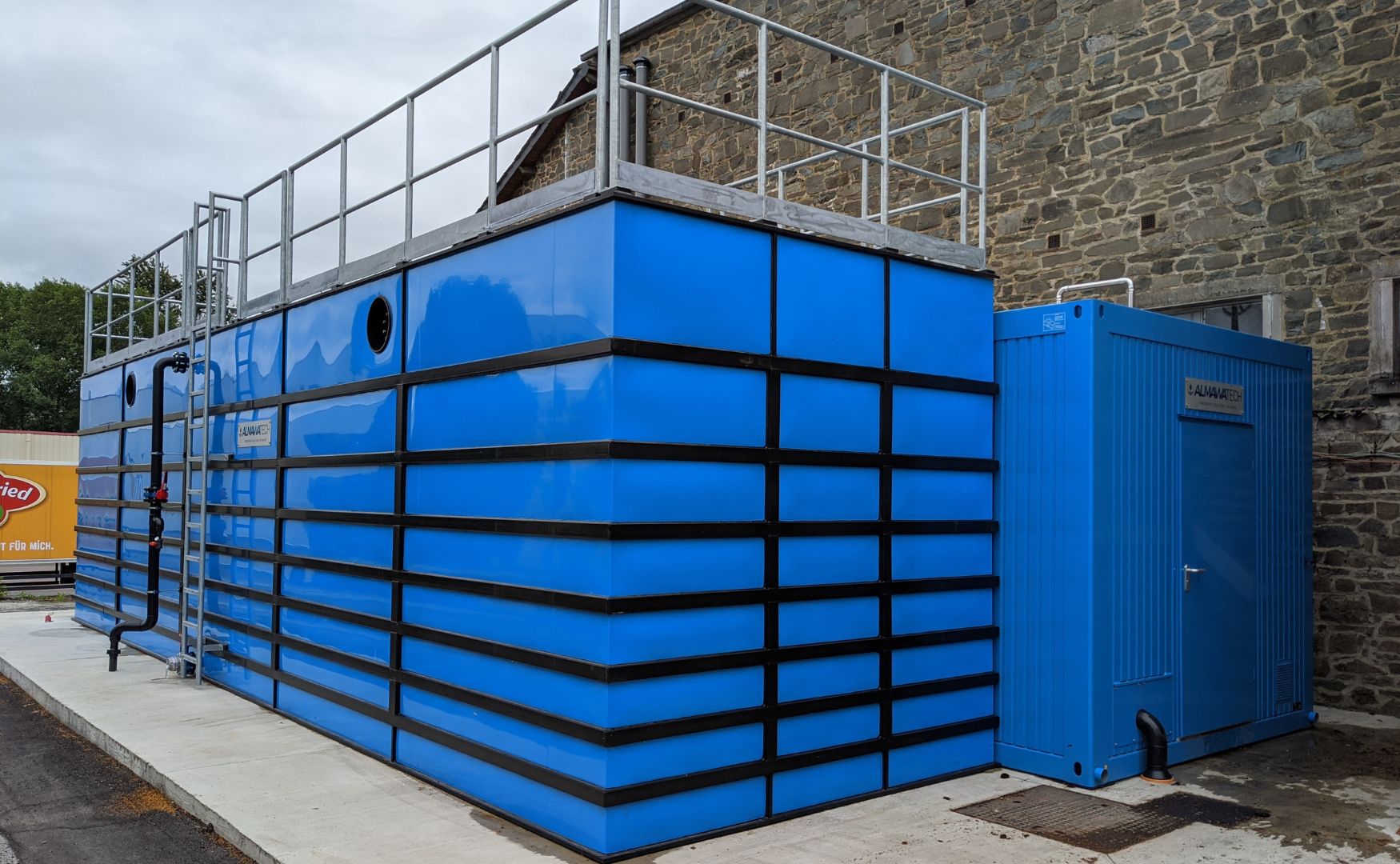The term anoxic refers to an environment or process in which no dissolved oxygen (O₂) is present. However, unlike anaerobic (completely without oxygen), anoxic conditions can contain other oxygen sources such as nitrate (NO₃-) as electron acceptors. The term is particularly relevant in water and wastewater treatment, especially in biological nitrogen removal, such as denitrification. Anoxic conditions are specifically created in order to convert the nitrogen in wastewater into elemental nitrogen (N₂) through the breakdown of nitrate, which escapes into the atmosphere as a gas.
Table of contents
Technical background
In anoxic reactors or zones, the biodegradation of organic substances is carried out by bacteria that are able to use nitrate (NO₃-) or nitrite (NO₂-) as alternative electron acceptors, as oxygen is not available as an electron acceptor. The anoxic environment is often used in biological wastewater treatment processes, especially for nitrogen removal. The denitrification process is the central biological process that takes place in anoxic zones.
Denitrification:
The process of denitrification takes place under anoxic conditions, in which special denitrifying bacteria have the ability to reduce nitrate or nitrite. This process takes place in several steps:
- Nitrate reduction (NO₃- to NO₂-): The denitrifying bacteria use nitrate as an electron acceptor and reduce it to nitrite.
- Nitrite reduction (NO₂- to NO): The nitrite formed is further reduced to nitric oxide (NO).
Denitrification is crucial for removing nitrogen compounds in wastewater and preventing overfertilization of water bodies, which can lead to eutrophication.
Anoxic conditions in practice
In industrial wastewater treatment, anoxic conditions are used specifically to reduce the nitrogen content in wastewater. This takes place in special anoxic reactors or anoxic zones within activated sludge plants or SBR reactors (Sequencing Batch Reactor). Anoxic treatment is often carried out as part of a two-stage process:
- Nitrification (aerobic): In a first step, ammonium (NH₄⁺) is oxidized to nitrate by nitrifying bacteria under aerobic conditions.
- Denitrification (anoxic): In the second step, the nitrate is reduced to nitrogen gas under anoxic conditions and escapes into the atmosphere.
Anoxic conditions are typically used in the following systems:
1. activated sludge process with anoxic zone:
- In activated sludge plants, the wastewater is first aerated in order to oxidize the ammonium nitrogen to nitrate through nitrification. The water is then fed into an anoxic zone where the denitrifying bacteria reduce the nitrate to nitrogen gas.

Photo: Denitrification tank of our ALMA BHU BIO plant
2. sequencing batch reactor (SBR):
- The SBR reactor can be operated in different phases, including an anoxic phase for denitrification. Here, the nitrate in the wastewater is broken down during a phase without oxygen supply.
3. membrane bioreactors (MBR):
- Special anoxic zones can be integrated into MBR systems to support nitrogen removal. These systems combine biological treatment with membrane filtration to achieve higher water quality.

Photo: Compact membrane bioreactor in modular design(ALMA BIO MBR)
4. denitrification filter:
- Denitrification filters are often used in circulation systems or cooling circuits to lower the nitrate content and reduce the nitrogen load.
Advantages of anoxic treatment
Efficient nitrogen removal: Anoxic conditions enable the removal of nitrate from wastewater, which contributes to the reduction of nitrogen loads and compliance with discharge limits.
Prevention of eutrophication: Denitrification prevents high levels of nitrogen from entering bodies of water and causing eutrophication, which could disturb the ecological balance in rivers and lakes.
Conservation of resources: The use of nitrate as an electron acceptor saves energy, as no external oxygen supply is required to support the microorganisms in the decomposition process.
Challenges and operating instructions
Optimal conditions: Denitrification only runs optimally under strict anoxic conditions. This requires precise control of the oxygen input and the carbon source that serves as food for the denitrifying bacteria. Methanol or a similar carbon source is often added to support the denitrification process.
Continuous monitoring: Monitoring the oxygen content and nitrate concentration is crucial for the operation of anoxic systems. Incorrect control can lead to denitrification running inefficiently or being interrupted.
Conclusion
Anoxic conditions are an indispensable component of biological nitrogen removal in wastewater treatment. They enable denitrification, in which nitrate is converted into harmless nitrogen gas. These processes are particularly important in industrial water technology in order to remove high nitrogen concentrations and close the nitrogen cycle in wastewater. In combination with aerobic processes in activated sludge and SBR plants, anoxic processes are an effective method of ensuring compliance with legal requirements and sustainable water treatment.







